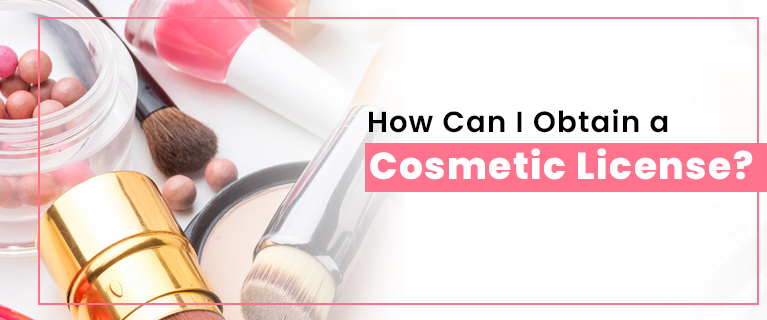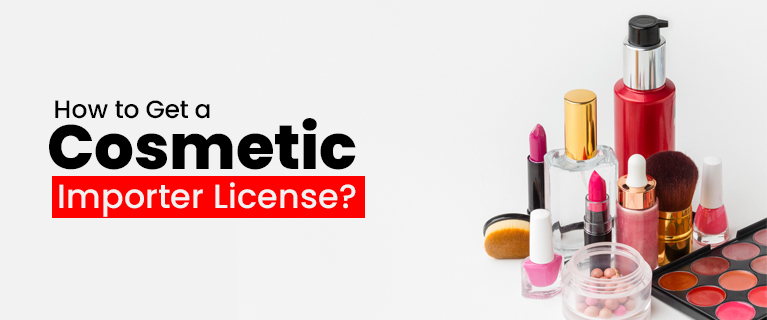How to Apply for Cosmetic License Registration
Applying for a cosmetic license registration is an essential step for businesses looking to manufacture or sell cosmetic products in India. The license ensures that the cosmetics are safe for use and comply with regulatory standards set by the Central Drugs Standard Control Organization (CDSCO).
Step 1: Determine Your Cosmetic Category
Identify the category of cosmetics you intend to manufacture or sell. Cosmetics in India are categorized into two classes:
Schedule S: These are cosmetics that are sold without the prescription of a registered medical practitioner, such as skincare products, perfumes, and toiletries.
Schedule S1: These are cosmetics that contain ingredients that may require more stringent regulatory control. This category includes hair dyes, toothpaste, and antiperspirants.
Read also this -: How Can I Obtain a Cosmetic LicenseStep 2: Choose the Appropriate Licensing Authority
The next step is to determine the appropriate licensing authority based on the location of your manufacturing unit or business premises:
Central License: If you plan to manufacture cosmetics at multiple locations or have a pan-India presence, you should apply for a Central License. This license is issued by the CDSCO's Central Licensing Authority.
State License: If your manufacturing or selling activities are limited to a single state, you can apply for a State License from the respective State Licensing Authority.
Step 3: Gather the Required Documents
Before initiating the application process, collect all the necessary documents and information. The exact documentation may vary depending on the licensing authority and the category of cosmetics. However, the following documents are typically required:
Application Form: Fill out the appropriate application form for Central or State License. These forms can be downloaded from the CDSCO's official website.Blueprint or Layout Plan: Provide a blueprint or layout plan of your manufacturing unit, including details of the production area, quality control laboratories, storage facilities, etc.
List of Cosmetic Products: Prepare a list of all the cosmetic products you intend to manufacture or sell, including their names, composition, and intended use.
Proof of Ownership or Possession: Submit documents proving ownership or possession of the premises where cosmetics will be manufactured or stored.
Affidavit: Submit an affidavit stating that the cosmetic products comply with the provisions of the Drugs and Cosmetics Act and Rules.
Manufacturing Details: If you plan to manufacture cosmetics, provide details of the manufacturing process, equipment, and quality control measures.
Technical Staff Details: Include information about the technical staff responsible for the quality control of cosmetics.
Fee Payment Receipt: Pay the required license fee and attach the payment receipt to your application.
Step 4: Submit the Application
Prepare a comprehensive application package containing all the required documents and forms. Ensure that the application is complete and accurate to avoid delays in the processing.
Online Application: The CDSCO has introduced an online application portal called "SUGAM" (Simplified Single Window Approval System) for submitting applications. Create an account on the portal, fill out the application form, and upload the required documents.
Offline Application: If you prefer to submit a physical application, you can do so by visiting the respective State Licensing Authority or the CDSCO's Central Licensing Authority. Provide both hard and soft copies of the application and documents.
Step 5: Inspection and Verification
After receiving your application, the regulatory authority may conduct an inspection of your manufacturing unit or business premises to assess compliance with safety and quality standards. The inspection is a crucial step in the licensing process.
Step 6: License Issuance
Once your application is reviewed and approved, the licensing authority will issue the cosmetic license. The license will specify the conditions and terms under which you can manufacture or sell cosmetics.
Step 7: Renewal of License
Remember that cosmetic licenses are typically valid for a specified period, after which they need to be renewed. Ensure that you keep track of the license expiration date and initiate the renewal process in a timely manner.
Conclusion
To sum up, obtaining a cosmetic license registration in India is a critical step for businesses operating in the cosmetics industry. It not only ensures compliance with safety and quality standards but also demonstrates a commitment to consumer safety and satisfaction. By following the systematic process outlined in this guide, including identifying the cosmetic category, choosing the appropriate licensing authority, gathering required documents, and submitting a comprehensive application, you can navigate the regulatory landscape and obtain the necessary license.
Remember that regulatory compliance doesn't end with obtaining the license. It is an ongoing commitment to maintaining high-quality standards, adhering to safety guidelines, and staying updated with any regulatory changes. Regularly monitoring your products, manufacturing processes, and business operations will help you sustain a successful and compliant presence in the cosmetics market.
Read also this -: A Guide to Obtaining a Cosmetic License Online in IndiaAs consumer awareness and demand for safe and effective cosmetic products continue to rise, obtaining and upholding your cosmetic license is not only a legal requirement but also a testament to your dedication to delivering quality cosmetics that meet the highest standards.



Comments
Post a Comment